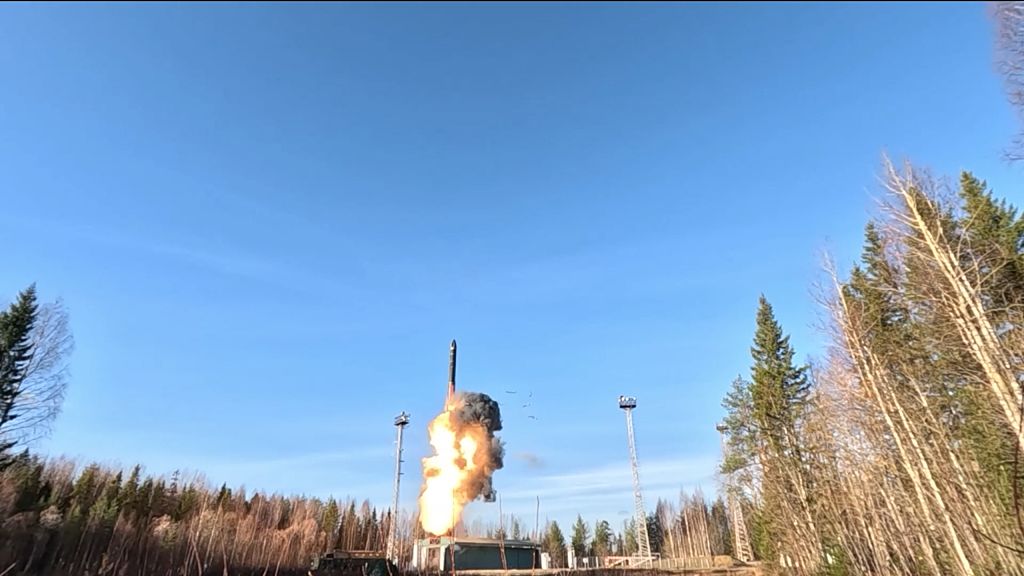Trump Moves to Resume US Nuclear Weapons Testing
In a bold move to establish US primacy within the nuclear arms community, President Donald Trump has announced his intention to restart testing America’s nuclear arsenal. After three decades of adherence to a test-ban agreement, Trump is breaking from what has been an implicit pact among nuclear nations not to test their atomic weapons.
With North Korea having tested its small but growing nuclear stockpile, and speculation that Russia and China have also broken with the accord, the administration argues that the US must ensure its own weapons actually work.
Trump to the War Department: Resume Nuclear Testing
The president’s decision to resume nuclear testing is not without some justification. The West has faced periodic but persistent threats from Russia, for whom a nuclear response is always on the table. Additionally, North Korea has issued numerous threats backed by a program of continuous testing of nuclear-capable ballistic and cruise missiles.
For the US to re-establish a nuclear testing program would mean officially walking away from the Comprehensive Nuclear-Test-Ban Treaty (CTBT), which was opened for signatures on September 24, 1996 — a treaty also signed by Russia that day. Up to that point, there had been 2,045 nuclear weapons test events, with some tests involving multiple devices.
Trump’s recent directive to the Department of War alarmed arms control advocates and nuclear policy experts. The president posted on Truth Social:
“Because of other countries’ testing programs, I have instructed the Department of War to start testing our Nuclear Weapons on an equal basis. That process will begin immediately.”
The Council on Foreign Relations noted:
“The announcement stirred concern among nuclear policy experts because of its potential disruption of what has been a more than three-decades-long moratorium on live testing of nuclear explosives.”
Is There Truly a Universal Moratorium?
While many nations observe the CTBT, has there truly been a universal moratorium on nuclear testing? In 1998, India conducted five underground nuclear device tests (three on May 11 and two on May 13), and Pakistan conducted two underground nuclear tests the same year. Neither country is a CTBT signatory, but both have abided by the treaty’s general principles since those tests.
The most troubling non-signatory nation is North Korea. The Democratic People’s Republic of Korea (DPRK) carried out underground nuclear tests between 2006 and 2017. Many experts believe DPRK is preparing for another round of atomic weapons testing.
According to the Defense Intelligence Agency’s 2025 Worldwide Threat Assessment:
“In early 2021, Kim [Kim Jong Un, DPRK President] laid out a five-year defense plan emphasizing the development of tactical nuclear weapons and highlighted the importance of developing ‘smaller and lighter nuclear weapons’ and ‘ultra-large nuclear warheads’… North Korea has restored its nuclear test site and is now postured to conduct a seventh nuclear test at a time of its choosing.”
As nuclear testing by US adversaries becomes more real, the CTBT risks becoming a symbolic gesture rather than an effective deterrent.
Adversaries Increasing the Atomic Threat
On November 2, 2023, Russian President Vladimir Putin signed a law formally withdrawing from the CTBT. While Russia has yet to resume nuclear testing visibly, it is no longer legally bound by the CTBT’s prohibitions on nuclear test explosions.
Russia has not been idle in developing new nuclear-capable weapons. Between October 26 and October 29, 2023, Russian news reported successful tests of a nuclear-powered hypersonic cruise missile called “Storm Petrel,” designed with unlimited range and the ability to evade defenses. Additionally, Putin revealed tests of the Poseidon nuclear-capable underwater drone — a “super torpedo” designed to generate massive waves capable of destroying coastal cities.
With Russia formally outside the CTBT and advancing its nuclear arsenal, the threat is tangible. Alongside predictions that China will reach 1,000 nuclear warheads by 2030, it is understandable why the US would want to ensure it remains equally ready and capable — a concern recognized by President Trump.
Concerns Over Renewed Nuclear Testing
Critics warn that resuming nuclear weapons testing could reignite a nuclear arms race. However, from President Trump’s perspective, the race for nuclear supremacy was never fully extinguished.
During the Association of Southeast Asian Nations conference, Secretary of War Pete Hegseth addressed questions about the US resuming nuclear weapons testing — what type, and when. He stated:
“We need to have a credible nuclear deterrent. That is the baseline. Resuming testing is a very responsible way to do that. It makes nuclear conflict less likely. Know what you have and make sure it operates properly. America will ensure that we have the strongest, most capable nuclear arsenal so we maintain peace through strength.”
The Importance of Tested Nuclear Deterrence
When an adversary knows that American nuclear weapons have been tested and proven effective, it strengthens deterrence. US nuclear warheads are, on average, 30 years old. According to the Science History Institute,
“[t]he US stockpile includes thousands of aging weapons that weren’t designed to last, yet they can’t legally be detonated to make sure they still work.”
President Trump intends to change that.
—
*The views expressed are those of the author and do not reflect the position of any affiliated organization.*
https://www.libertynation.com/trump-to-start-testing-nuclear-weapons/

